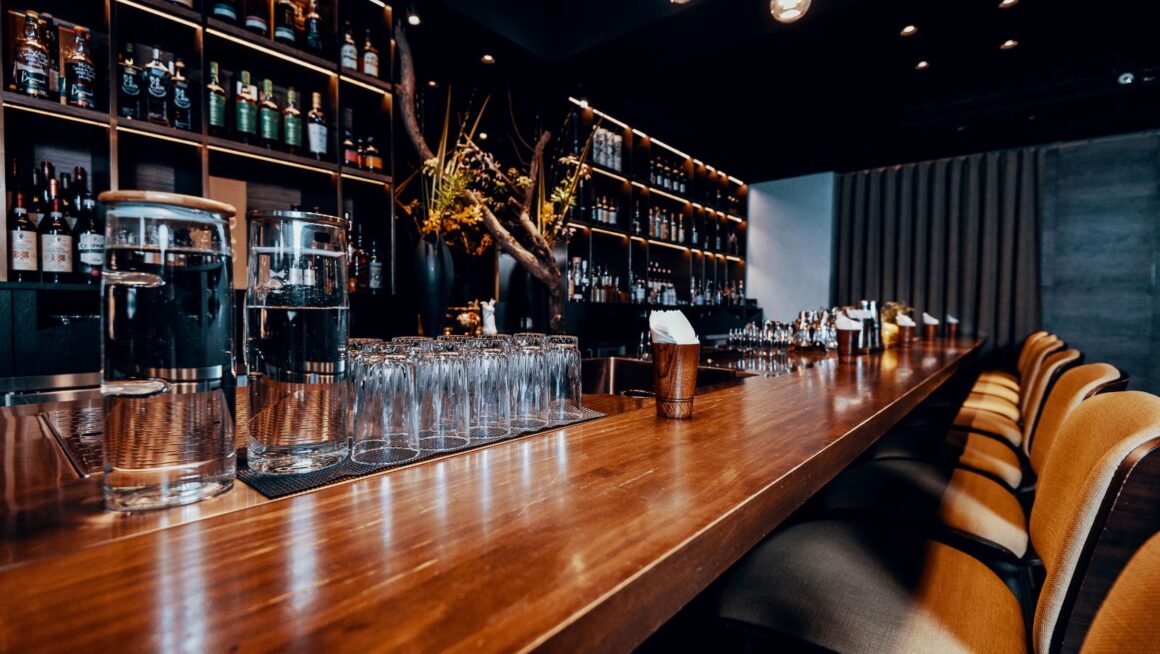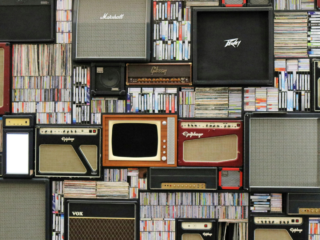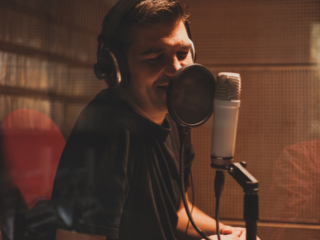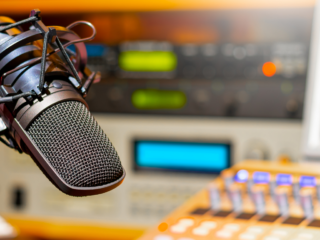The effective work of a bar depends to a large extent on the competent equipment of the bar counter. This is the central place where the bartender creates drinks, interacts with guests, and demonstrates his skills. Proper organization of the working space and availability of the necessary bar supplies are the keys to well-coordinated work of the staff and a high level of service.
Table of Contents
TogglePlanning and Zoning of the Bar Counter
Correct zoning of the bar counter is crucial for the effective work of the bartender and the unimpeded service of guests. There are several main functional zones:
The Beverage Preparation Area
The main working area, where the drinks are prepared directly, is the preparation area. This is the central part of the bar, requiring maximum ergonomics and capacity.
Basic bar tools such as shakers, strainers, and madeleines should be located within easy reach of the bartender to ensure a smooth workflow.
This area should be designed to provide adequate space for beverage handling, mixing ingredients, and utensil manipulation.
Inventory and Utensil Storage Area
Directly adjacent to the beverage preparation area should be the inventory and utensil storage area. These are compact cabinets and racks where glasses, glasses, additional bar tools, and accessories are placed.
Rational organization of storage taking into account the frequency of use of items will allow the bartender to quickly and easily get the necessary utensils, saving time and increasing the efficiency of work.
Communicating with Guests
Opposite the main bar should be organized a zone of communication with guests. This is the space where visitors are seated to chat with the bartender and taste drinks.
It is important to provide sufficient width of the counter and free space in front of it for comfortable accommodation of guests. In this area, stands or shelves should also be provided for the neat arrangement of ready drinks.
Food Preparation Area
In a separate or combined cooking area, there should be a space for preparing ingredients — cutting fruits, citrus fruits, vegetables, and other components.
This area should contain cutting boards, knives, bowls, graters, and other necessary supplies for the initial processing of products before they are used in the preparation of beverages.
Service Area
The service area is used for storing stock — bottles of alcoholic beverages, syrups, juices, and other ingredients. This area should contain refrigerated cabinets, ice freezers, and racks for storing dry supplies.
It is important to provide easy access to the service area for regular restocking by bartenders.
In addition to functional areas, it’s important to consider:
● Lighting — should be bright and evenly distributed.
● Aisles — sufficient width for free movement of staff.
● Finishing materials — wear-resistant, durable, easy to clean.
● Ventilation — necessary to maintain comfortable working conditions.
Proper organization of the bar counter will ensure optimal organization of the work process and increase the productivity of the bartender and the level of service to guests.
Essential Equipment
Properly selected inventory is a key element for the effective operation of the bar. Let’s consider the main groups of necessary equipment and utensils:

Bar Tools
● Shakers (bonfire, French, tin-on-tin, etc.) — for whipping and mixing cocktail ingredients.
● Strainers (Hawthorne, Julep, etc.) — for straining ingredients and separating ice.
● Muddlers — spoons for stirring and foaming drinks.
● Measuring cups (jiggers) — for accurate dispensing of ingredients.
● Stirring spoons — stainless steel or spice-line bar spoons.
● Bottle openers (manual, built-in, with or without handle) — for opening bottles.
● Knives (citrus, tomato, universal) — for cutting fruits and vegetables.
● Ice tongs — for gripping and transferring ice cubes.
● Trays (oval, round, rectangular) — for serving and transportation of drinks.
Barware
● Wine glasses for red, white, and sparkling wines (Bordeaux, Burgundy, Flute, etc.).
● Whiskey glasses (old-fashioned, slices), brandy, tequila.
● Beer glasses (stout, wheat, Irish, etc.).
● Stoppers (shot glasses, liquor glasses) for strong drinks.
● Decanters for decanting (aeration) and serving wines.
● Cocktail glasses (highball, collins, rox, cocktail, zombie, etc.).
● Glasses for Campari, sherry, grog, mulled wine, and other drinks.
Bar Stations
● Blenders (bar, professional) — for making smoothies, frappes, and frozen drinks.
● Juicers (manual, electric) — for freshly squeezed juices.
● Ice makers — to ensure a continuous supply of ice.
● Coffee machines (espresso, cappuccino, etc.) — for making coffee drinks.
Additional Accessories
● Glass holders of various shapes and sizes.
● Rails for drying and storing glasses/glasses.
● Storage containers for fruits, vegetables, and herbs.
● Containers and buckets for garbage.
● Dispensers for syrups, sauces, egg whites, and other ingredients.
● Coolers for cooling and storing bottles, cans, and fruit.
Having all the necessary bar inventory allows the bartender to work as efficiently as possible, offering guests a wide range of drinks of high-quality preparation and serving.
Selection of Barware and Equipment
Competent selection of barware and equipment is the most important stage in equipping a professional bar. The bartender’s productivity, the quality of drinks, and the overall guest experience depend on the right choice.

Selection criteria:
● Materials (glass, crystal, stainless steel, etc.)
● Shape and design
● Capacity
● Durability and strength
● Ease of use and cleaning
● Specialized companies
● Wide assortment
● Possibility of wholesale purchases
● Quality assurance
Taking into account the needs of the concept:
● Type of establishment (bar, restaurant, club, etc.)
● Service format (at the counter, around the room)
● Specialization (wine bar, cocktail bar)
Maintenance and storage of inventory:
● Operating and maintenance rules
● Proper storage (racks, shelving)
● Checking of service life
● Replacement of damaged inventory
A comprehensive approach to the selection of tableware and inventory, taking into account the concept of the bar, intensity of work, budget, and other factors will allow you to create an ideal bar. This allows you to prepare drinks and serve guests at the highest level.
Conclusion
An equipped bar counter with properly selected inventory and tableware is a business card of any successful bar. Proper planning of working areas, choice of high-quality and durable equipment, as well as taking into account the concept of the institution will provide maximum comfort for the bartender and the highest level of service for guests.
Creating a functional bar requires a detailed approach — from the definition of the necessary zones and their rational zoning to the careful selection of each element of the inventory. The key criteria are ergonomics, well-thought-out organization of space, and impeccable quality of tableware and tools.
Cooperation with reliable suppliers of commercial tableware will guarantee premium quality bar equipment with long service life. A wide range allows you to choose glasses, tumblers, shakers, and other accessories following the format and style of the institution.
Armed with the knowledge of the optimal planning of the bar, the mandatory list of inventory, and the criteria for selecting tableware, you will be able to create a truly ideal workplace for the bartender. This will be a solid foundation for your bar to thrive, increase brand recognition, and attract new guests.




























































